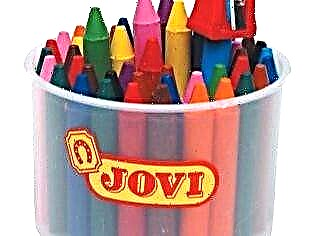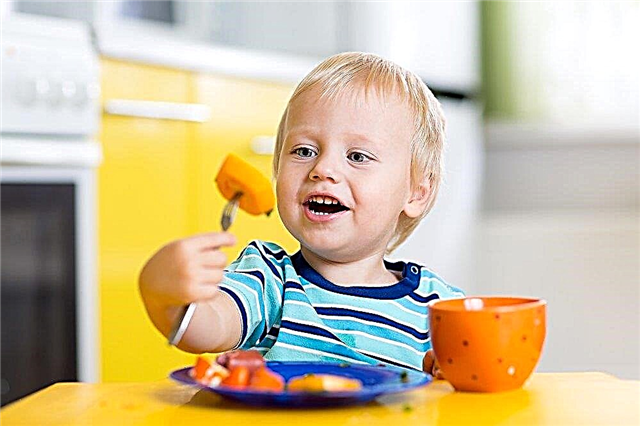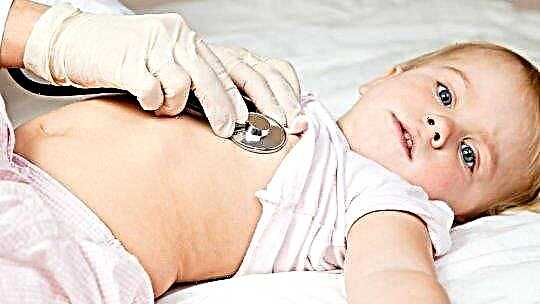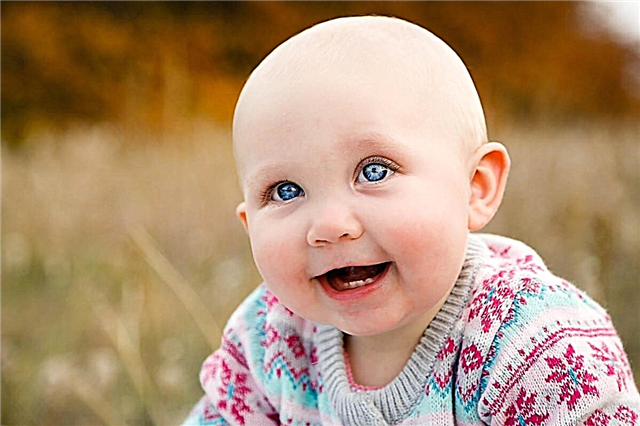
Preschool children like to draw absolutely everyone, without exception, and most importantly, that such pastime helps to fully develop the baby, contributing to the improvement of fine motor skills of hands and imagination, patience and color perception.
In this regard, many parents not only do not interfere with children's art, which threatens with a sudden change in the design of parts of the apartment accessible to the child, but also contribute to the earliest possible hobby of children for such a hobby. In such conditions, wax crayons are almost ideal.
Features:
The first analogues of modern wax crayons appeared many years ago - these are art pastels. The material, which today is also more widely perceived as intended for children's creativity, was previously actively used by serious artists for sketches, and sometimes for full-fledged paintings.
In the old days, only people of art themselves could make such a pastel for their needs, who manually mixed pigments with wax, resulting in planed blocks of the desired size and color.

Of course, modern wax crayons differ significantly from classic pastels and even from the product that is called "pastel" today. This material is sometimes used as a component for real art, while wax crayons are rightly called the "cheap" version for children.
Ordinary crayons are not capable of giving all the benefits that professional pastels can. but on the other hand, they are maximally sharpened for the safety of the baby who uses them, - the composition should contain a minimum of harmful additives. The low cost allows parents to purchase such tools for drawing in almost unlimited quantities, which opens up unlimited creative horizons for the child.
Benefits
The modern market offers a huge variety of drawing goods to choose from, and many of them are good for even the smallest children. However, wax crayons are an excellent solution for babies aged one year, and all because such a tool has a number of useful qualities:
- Safety. It should be noted that parents should still carefully study the composition of crayons before buying, since not all manufacturers are conscientious. Nevertheless, the composition of wax crayons does not require the presence of harmful chemicals, so that even small children can use them without fear for their health.
- Softness... Wax-based crayons are characterized by a rather high fat content, due to which they leave a bright, well-visible mark on almost any paper. This is very convenient for toddlers who do not yet have the strength in their hands to press confidently.
- Convenience. Crayon, unlike most other drawing tools, writes from either side. If you still need to learn how to hold the pencil correctly, then you can take the crayon with either side - it will still draw.


- Possibility of improving technology. Due to its special structure, this material does not break, so that the baby will not have to be upset about the crumbled, quickly deteriorated chalk. Nevertheless, if desired, it can be sharpened with something sharp, because thanks to this, the thickness of the line left can be adjusted. If you need to remove incorrectly drawn or just unnecessary parts, it is enough to use an ordinary eraser - and the paper will become clean again.
- Reusing crumb... If the stick crumbles heavily, which is why it is consumed unproductively, then this is not a problem, because the resulting crumb can be reused. To do this, you need to collect it by colors and heat it in the oven - a temperature of several tens of degrees is enough to melt the wax. After that, the warm thick mass needs to be shaped like a stick or another more convenient one, allowed to cool - and the product is ready for further use.


Composition
Although the composition of the wax crayon seems quite simple - pigment and wax - in fact, in modern recipes, everything is much more complicated. Parents should not be too lazy to first read the composition, because even with a completely harmless recipe, an allergic reaction of the child to one or another component is not excluded.
The production of crayons begins with several types of wax, mainly of paraffinic origin, which melt at a temperature of several tens of degrees. After that, fillers are added to the melted mass, which not only increase the total volume of products produced, but also reduce the fragility of the sticks, because without such an addition they would crumble much stronger.


Despite the fact that paraffin wax itself has a good abrasion rate, stearic acid is also added to the composition, which makes the left trace more noticeable. After that, the manufacturer is forced to add other components to the mixture, for example, additives to prevent the mass from sticking to the mold.
Dyes are added last. Some manufacturers offer consumers more than a hundred shades of wax crayons to choose from, which already suggests a synthetic origin of the dyes used. However, not all companies that produce such products necessarily use harmful ingredients, so you just need to choose carefully.

Varieties
You should not take wax crayons as a kind of standard product, which is always the same - in pursuit of consumer attention, modern manufacturers have come up with dozens of varieties of this product.
Firstly, drawings made with wax crayons can look different depending on the type of pigments used in them. Watercolor is a typical ingredient in these crayons, although the wax will not wash away.
Drawings with some crayons are more like oil paintings if the recipe involves a very significant addition of fat.


For most parents, sticks are the usual form of releasing wax parts, however, they can also vary in shape: such elements are thick and thin. There are also triangular wax crayons for drawing on paper, and even crayons, pebbles, the shape of which is rather difficult to describe. Triangular crayons are very good for tinting large solid surfaces.
When choosing a set, you need to pay attention to the number of colors.... As the first such gift, 6 colors are enough, if only they are bright enough - it is unlikely that the baby already has creative ideas that require the use of a full-fledged palette. Sets of 12-24 colors will be a good gift for a preschooler who fell in love with drawing with crayons, devotes a lot of time to it, and even achieved some success in his hobby. Occasionally, you come across sets of 36 colors - they are already designed for children who are specially trained in pastel drawing techniques.
Children's crayons must be reliably protected from accidental staining of any surfaces., despite the fact that washing away their traces will not be difficult. Some manufacturers, in pursuit of cheaper goods, release sets in cardboard packages, but it is better to purchase a set in a plastic box - it also guarantees the integrity of each stick. An alternative solution can be crayons in a plastic case with a twisting mechanism, they are structurally somewhat reminiscent of finger glue.
Finally, there are also relatively unconventional wax crayons. You can purchase a variety of such a product designed specifically for labeling - this tool is not so suitable for drawing as it is for highlighting the desired thoughts in a textbook. Toddlers will love the fluorescent options made with glow-in-the-dark pigments.


Special recipes for the bathroom are also produced, which are not afraid even of falling into water, and the water from such an incident should also not be colored.
Colors
The modern color variety of wax crayons is amazing - some manufacturers offer more than a hundred shades in their palette. Of course, a set with so many tones can hardly be found, and the child does not need so much - it would be more correct to call such products "full-fledged professional pastels."
Children usually buy crayons in a set that includes, first of all, all the most basic shades. It should be noted that the colors of this tool do not mix: the shade applied on top will simply overlap the bottom one. This means that the number of color options in a set represents the maximum number of colors in a young artist's palette.

White wax chalk, sold separately, is also rare. It is more suitable for drawing on a slate board or even asphalt, but in general this color is included in most color sets so that you can draw even on paper of any other color.
Brands
Nowadays, dozens of companies around the world are engaged in the production of children's wax crayons, but in Russia, products of no more than a dozen brands are relatively widespread. They can be roughly divided into domestic, Chinese and foreign.
Among Russian manufacturers, the most famous are companies that hold leading positions in the production of goods for creativity - these are the famous "Gamma" and "Ray". You can buy them literally everywhere, the variety of sets is also quite wide, and most importantly, at a low price, they give an acceptable result. As a first set, such a gift for a baby will be a good solution.

Products from China should no longer be perceived in the context of the stereotypes of the end of the last century, when such products were regarded as goods of poor performance. On the other hand, some Chinese manufacturers still make consumers regret the money spent: the crayons may not be so soft, they crumble too easily, are not very bright or, worst of all, may contain harmful components.
The traditional advantage of Chinese products is the extremely low price that can give odds to domestic counterparts. However, the choice of such a purchase should be approached with great caution - it is better to acquire it exclusively on the advice of friends.


Foreign samples brought to us mainly from Western Europe and America are of good quality, but also at a rather high price, which does not allow us to consider them a generally available product. Of course, any family can purchase one set, but when the child gets carried away (especially if the result is impressive), then regularly providing the baby with such crayons can become a problem.
Western manufacturers on our market offer products with different quality, so their choice is a matter of taste, but in general, all sets are worthy of attention. Among the manufacturers, it should be noted, in particular, American firm Crayola and Spanish Jovi, although the list does not end there, of course.


How to choose?
When choosing wax-based chalk for children, you should pay attention to some product characteristics that will be of importance during operation:
- Base material... Most crayons are paraffin-based, but it's best to look for a natural wax-based option, especially for toddlers. Such a purchase will cost more, but the result will, on average, please much more (at least, such crayons are more plastic).
Natural wax is still much safer than paraffin if a child suddenly wants to taste their paint tool.
- Information on the packaging. A conscientious manufacturer must indicate the composition on its products so that parents can carefully read it and draw conclusions about the benefits or harms of such a set for the baby. If there is any danger from improper use of chalk, then this will be indicated. It is also important to pay attention to the recommended age of the young artist (it may indicate the presence of harmful components that are undesirable for ingestion) and the shelf life.
- Brand name... It is not for nothing that some companies have gained worldwide fame and sell their products in millions of packs annually - this indicates that consumers never have complaints about such products. A manufacturer who values his good name and has spent many years promoting the brand will definitely put his name and address on the packaging where the set was made.

Reviews
If we ignore the comments about the products of very dubious manufacturers, we get the following picture: wax crayons are praised by absolutely all parents, and some cannot find even small minuses in them.
First of all, they highlight safety. At the same time, we are talking not only about the safe chemical composition, but also about the produced form - unlike a pencil, a crayon even in the form of a stick will not be so sharp to pose a risk of injury from rough handling.
Convenience for the child is also of great importance. If he would have abandoned pencils, felt-tip pens and paints at an early stage of his development due to the fact that he simply cannot draw something meaningful with such means, then there is no such problem with crayons - they paint with either side... Moreover, they don't even have to buy paper, because they write on a variety of surfaces, including street asphalt, which saves parents money and cheers up passers-by.

For information on what to do from the remains of wax crayons, see the next video.



